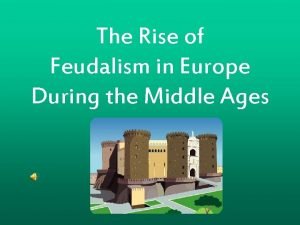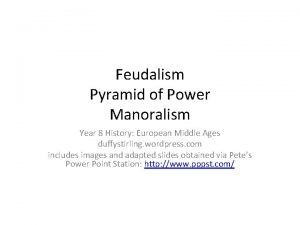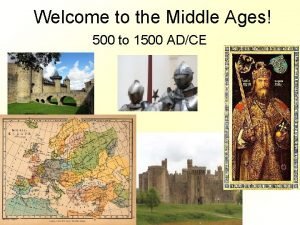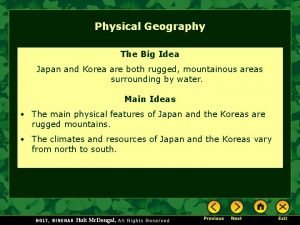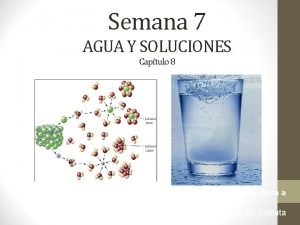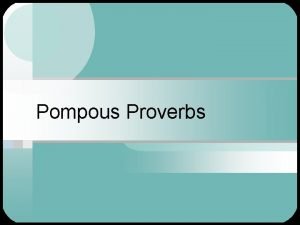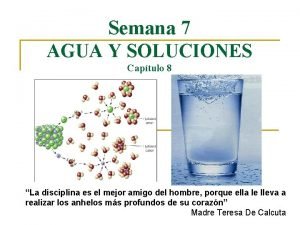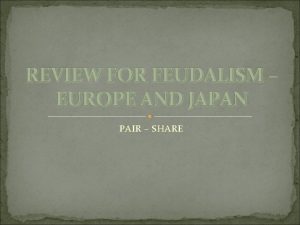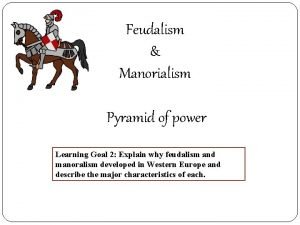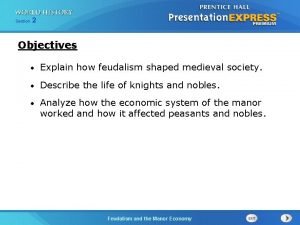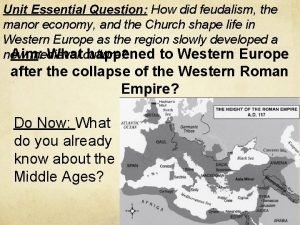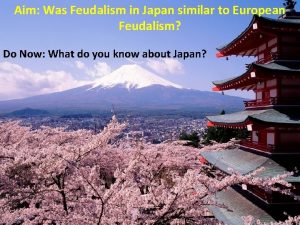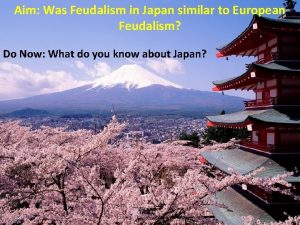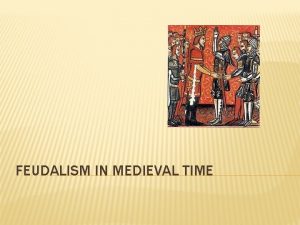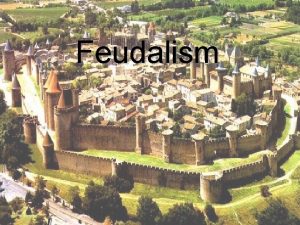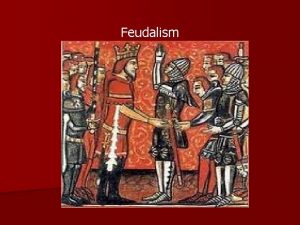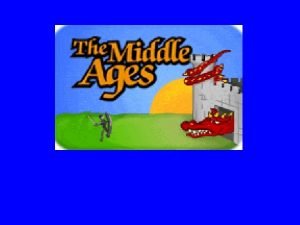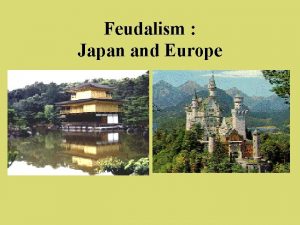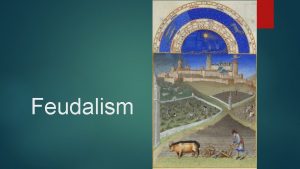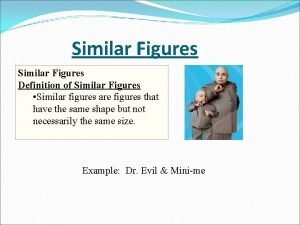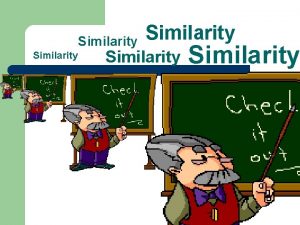Aim Was Feudalism in Japan similar to European


















- Slides: 18

Aim: Was Feudalism in Japan similar to European Feudalism? Do Now: What do you know about Japan?

A) B) C) D) E) F) I Geography of Japan is an archipelago east of Korea. It consists of 1000 s of islands, but 4 main ones. Japan lies on a fault line, and is part of the Pacific Ring of Fire (a circle of volcanic activity in the Pacific Ocean). Japan is very mountainous. Its tallest mountain is Mount Fuji. Only 20% of Japanese land is arable (suitable for farming). Japan’s main natural resources are seafood and rice. The Mongols attacked Japan in 1274 and 1281. Both times their ships were stopped by strong kamikaze winds! Mt. Fuji Rice Paddy

Above is the attempted invasion of Japan by the Mongols (during the Yuan Dynasty in the 13 th century).

Pacific Ring of Fire On March 11 2011, Japan experienced a devastating earthquake, causing mass destruction. However, Japan is a leader in geothermal energy (from magma under the Earth’s crust).

II Early Japan (300 – 710 CE) A) Early Japanese were hunters and gatherers. They were controlled by clans (small political group based on family ties, often led by an elder). B) The traditional Japanese religion was Shinto (worship of kami; forces in nature; a form of animism). C) Through cultural diffusion, early Japanese culture absorbed many Chinese traditions and ideas including Confucianism, Buddhism, art, architecture, and a system of writing. D) By 400 CE Japan was united under an emperor, with the capital at Nara. A Shinto Shrine The first sumo wrestling matches were performed in honor of the gods, in hopes of a good harvest.

III The Heian Period A) 794 CE Kyoto became the new capital of Japan. B) 9 th century poets began to write in Japanese instead of in Chinese. C) Lady Murasaki Shikibu wrote The Tale of Genji 1000 CE. *The world’s 1 st known fictional novel! It is about Genji, the son of the Emperor during the Heian period. It describes in detail the differences between the nobles and the commoners. Heian Court Dress

Heian Japan

IV Feudal Japan A) By the 9 th century CE, the power of the Emperor declined. Feudalism became the dominant form of government in Japan. Emperor The emperor was a figurehead without real power. Shogun The Shogun was the real ruler of feudal Japan, and head of the military. Daimyo Lords Samurai Warriors Peasants The Daimyo lords were given land in exchange for loyalty to the Shogun. The Samurai provided military service to the Daimyo Lords in exchange for land or food. Farmers had a higher social status than merchants. Confucianism had influenced Japan, and believed merchants to be useless as they did not always make things they sold.

Feudal Japan Continued… B) The Samurai followed the Code of Bushido “Way of the Warrior” 1. Honor 2. Bravery 3. Loyalty 4. Simplicity *If a Samurai displeased his master or lost a battle, he committed seppuku (ritual suicide) so he will not lose honor. A samurai always carried 3 swords. The short sword was only used for seppuku. A Samurai would be buried with his most cherished sword. Women could be samurai! Samurai swords were sometimes used on live bodies of condemned criminals, but more common was to have the swords tested on criminal corpses.

Osaka Castle, Built 1583 As Daimyo lords fought with each other and gained more land, the need for bigger and stronger fortifications arose.

Samurai Armor Samurai armor incorporated steel, leather, and wood plates,

V Zen Buddhism A) Zen Buddhism began in China in the 6 th century. It was influenced by Taoism; Zen Buddhists have a great respect for nature. It became popular in Japan by the 12 th century. B) Zen Buddhism greatly influenced Japanese culture. 1. Zen Buddhism requires a strict mental focus and discipline, which reinforced the Code of Bushido 2. Zen Buddhist Gardens were built as places for meditation and beauty 3. Japanese Tea Ceremony: This ceremony transforms the simple act of pouring tea into a beautiful art form. 4. Haiku Poetry: Short, simple, beautiful poems. 5, 7, then 5 syllables. HAIKU Spring is passing. The birds cry, and the fishes fill With tears on their eyes. Zen means “meditation”.

Japanese Tea Ceremony The Japanese Tea Ceremony is a ritual of preparing and serving Japanese green tea. Every movement is choreographed, and every object is chosen to represent the season. The whole process is not about the tea, but about the entire experience!

Golden Buddhist Temple, Japan

Zen Buddhist Garden This Zen garden was designed deliberately for the purpose of meditation.

Zen Buddhist Gardens for Every Season!

Summary 1. Describe at least 2 ways that Japan’s geography has impacted its history and/or culture. 2. Using a Venn diagram, compare and contrast Japanese feudalism with feudalism in Western Europe. *Include at least 4 similarities and 4 differences. 3. Write your own haiku about Japan! My friend pork shoulder I return to you. this time i've brought mayonnaise Can of metal, slick soft center, so cool, moistening I yearn for your salt

Archipelago Arable Clans Code of Bushido Daiymo Feudalism Heian Period Kamikaze womds Lady Shikibu Mt. Fuji Pacific Ring of Fire Samurai Sepukku Shinto Shogun The Tale of Genji Zen Buddhism Key Vocabulary
 Feudalism japan pyramid
Feudalism japan pyramid Feudal europe social pyramid
Feudal europe social pyramid Pyramid feudal system
Pyramid feudal system Feudalism and manorialism venn diagram
Feudalism and manorialism venn diagram Bushido vs chivalry venn diagram
Bushido vs chivalry venn diagram Japan physical features
Japan physical features Similar disuelve a similar
Similar disuelve a similar Precipitancy creates prodigality
Precipitancy creates prodigality Similar disuelve a similar
Similar disuelve a similar Similar disuelve a similar
Similar disuelve a similar The development of feudalism in western europe
The development of feudalism in western europe Feudal japan social structure
Feudal japan social structure How to draw feudalism
How to draw feudalism Socialism capitalism hybrid
Socialism capitalism hybrid Manorialism vs feudalism
Manorialism vs feudalism How did feudalism shape medieval society
How did feudalism shape medieval society Byzantine trade routes
Byzantine trade routes The manor economy was based on
The manor economy was based on Feudalism
Feudalism

